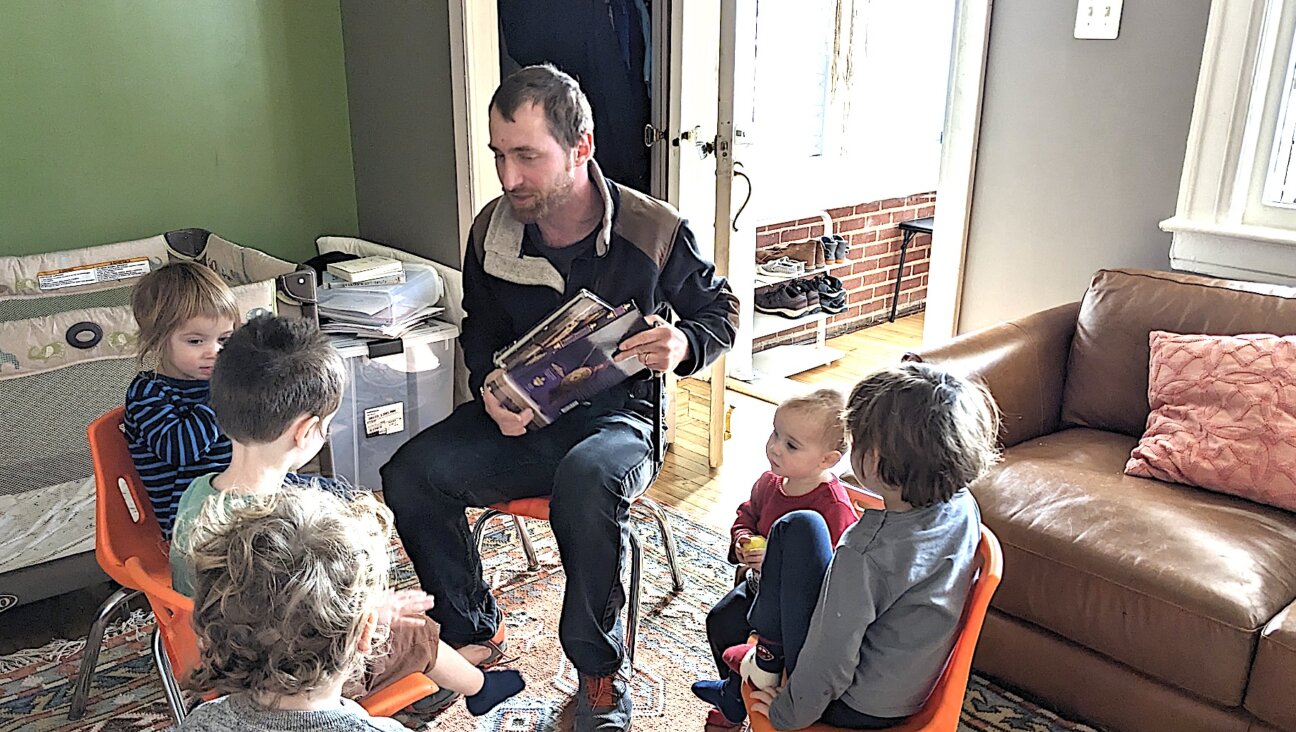Military Gala at the Pierre and ‘Waiting for Godot’ in Yiddish

General David Petraeus and Ivan Obolensky Image by Karen Leon
Petraeus, Director of CIA, Honored at Soldiers,’ Sailors,’ Marines,’ Coast Guard and Airmen’s Club Gala
It was gold braid, medals, military dress and evening gowns at the October 5 Soldiers,’ Sailors,’ Marines,’ Coast Guard and Airmen’s Club’s 16th annual military ball at The Pierre. David H. Petraeus, a retired U.S. Army general and now Director of The Central Intelligence Agency, received the Service to the Nation Award at the ball.
Also honored were James Amos, commandant of the United States Marine Corps, who received the Distinguished Military Leadership Award; New York Post editorial page editor Robert McManus, who received the Distinguished Media Achievement Award, and Mitzi Perdue, editor-at-large of GEN, a genetic engineering and biotechnology publication. Perdue also received the Service to the Nation Award. The event was organized by the 30-person-plus ball committee, which included Judy Kuriansky, Hadassah Loeb and Bertie Lowenstein, plus a roster of more than 100 chairmen, including. Jonathan Farkas, Howard Rubenstein, Robert Morgenthau, John Catsimatidis and their respective spouses.
SSMAC Chairman and CEO Ivan Obolensky welcomed the 400 guests: “We are blessed to celebrate the 16th anniversary of this evening and the 93rd year of this organization. Tonight we are in a room of heroes — heroes of America, and we are pleased that you can join us this evening.” In the dinner journal’s letter, Obolensky wrote: “How proud we all are this memorable night to hail and salute… the unparalleled United States Marine Corps…. Each and every one committed to protect us from those who have sworn to do us harm.” Speaking of SSMAC’s club on Lexington Avenue at 37th Street, which was established in 1919, Obolensky said: “Nothing has changed. It used to be $1 a night for troops and $5 for their civilian counterparts. The extraordinary room rates SSMAC charges our military friends and families [now] comes to a maximum of $100 per night. Cadets and midshipmen $30, the average $49. Entire families now find it economically sound to travel all the way to New York and stay at the club.”
Upon accepting the award, Petraeus said: “We remind our men and women in uniform that our great nation stands behind them…. It is heartening that virtually all of our citizens agree on one critical point: that we should all support those who put themselves in harm’s way to serve our country.”
Following the photo-op with Petraeus, Karen Leon (this column’s photographer) told the general that during the August 13, 2003, New York City blackout, unable to get home after leaving the Forward building at its then 33rd Street address, she spent the night at the SSMAC Club and by candlelight ate canned tuna and listened to war stories told by servicemen and women as well as civilians from across America.
I also had a brief conversation with Chip Fisher, son of stereo pioneer Avery Fisher (whose name graces Lincoln Center’s Avery Fisher Hall). Fisher heads Wallace Laboratories, which offers a device that helps treat the symptoms of post-traumatic stress and brain injury and is used for returning veterans.
“Waiting for Godot” in Yiddish Makes an Appearance on Manhattan’s Upper West Side
On October 3, author Nahma Sandrow and her husband, photographer William Meyers, hosted a reception at their Upper West Side home for a preview of the world premiere of the New Yiddish Rep’s upcoming Yiddish production of Samuel Beckett’s “Waiting for Godot.” David Mandelbaum, the Rep’s founder and artistic director, portrayed the character Estragon, who was kvetching in a juicy Galizianer dialect. In chiseled Litvishn (Lithuanian) Yiddish, Shane Baker portrayed the character Vladimir. I asked Baker, who translated the play into Yiddish and is also the executive director of the World Congress for Jewish Culture, why the two characters from the same community articulate in different dialects. He assured me that “when the full play is mounted, both will probably go with the Voliner Yiddish dialect — the official Yiddish theater dialect.” In response to my compliments vis-à-vis his Yiddish articulation, Baker said: “I am not an MOT [a Member of the Tribe] but of Episcopalian pedigree, born and raised in Kansas City, Mo.”
The scene was directed by Romanian-born Moshe Yassur, who has worked in Tel Aviv, Paris, Bucharest and New York. “For us in Romania, Yiddish was not only a language but a country,” Yassur told the assembled. “We did not have a country, so we had a culture. We still had a suitcase in 1939 when I came to Israel as a child of 15 where [at the time] Yiddish was an orphan language. The idea for Godot in Yiddish was Mandelbaum’s, who felt that we have presented a lot of classic Yiddish material so that it would be fair at this point to take a look at a world play in Yiddish. Each of us has a Godot he is waiting for. It is a Jewish plea… the Jews are [still] waiting for the Messiah for 4,000 years. As to why in Yiddish? We did Sholem Aleichem, Chaim Grade [in Yiddish] and if we continue to exist, so will the Yiddish Rep… doing Beckett and Ionesco in Yiddish.
















